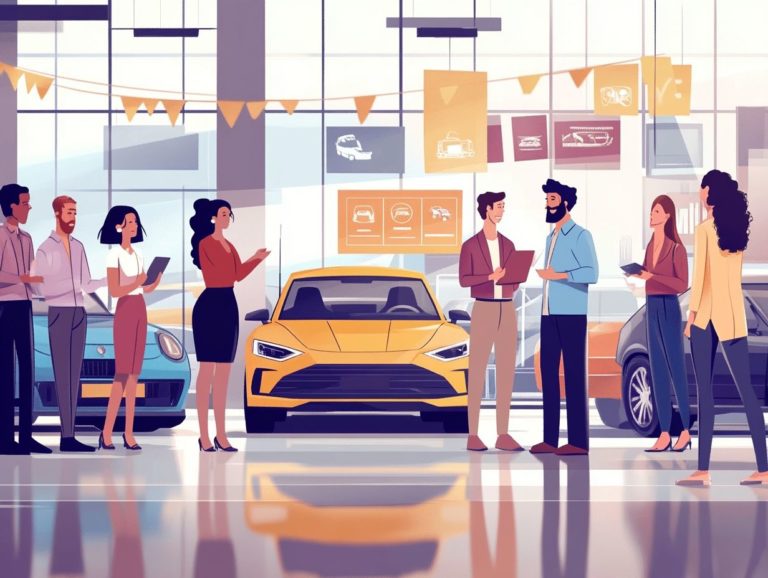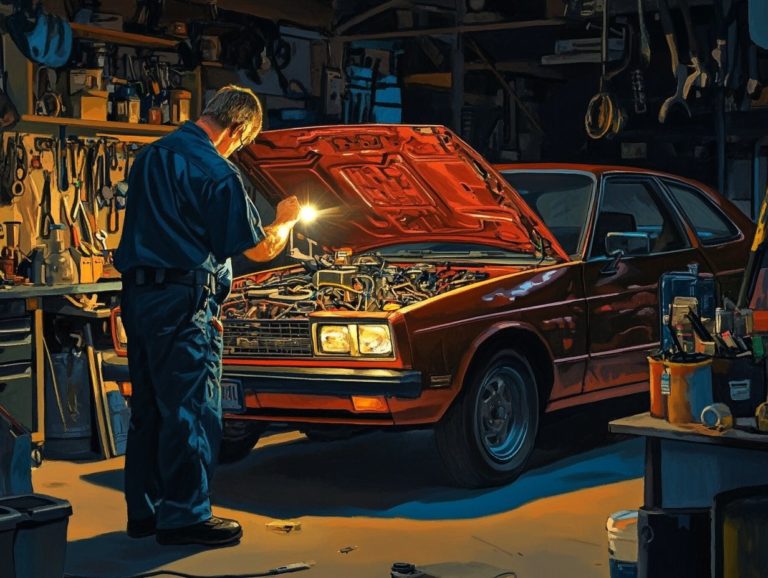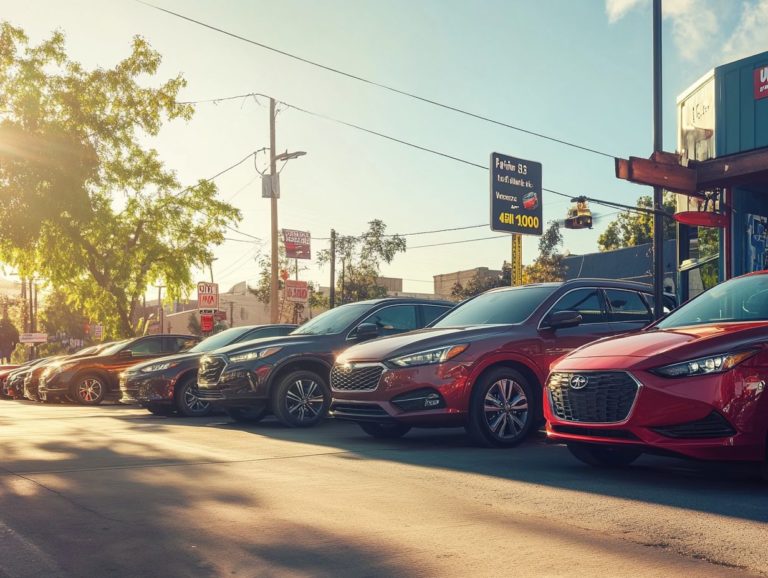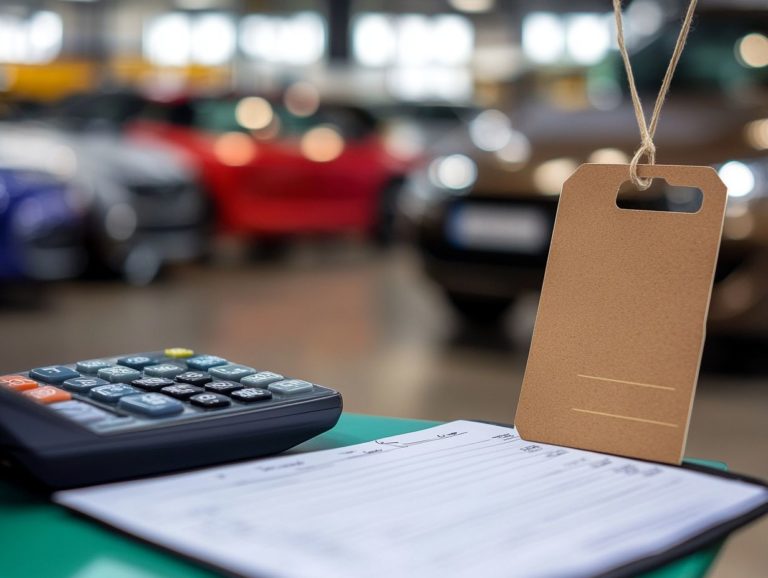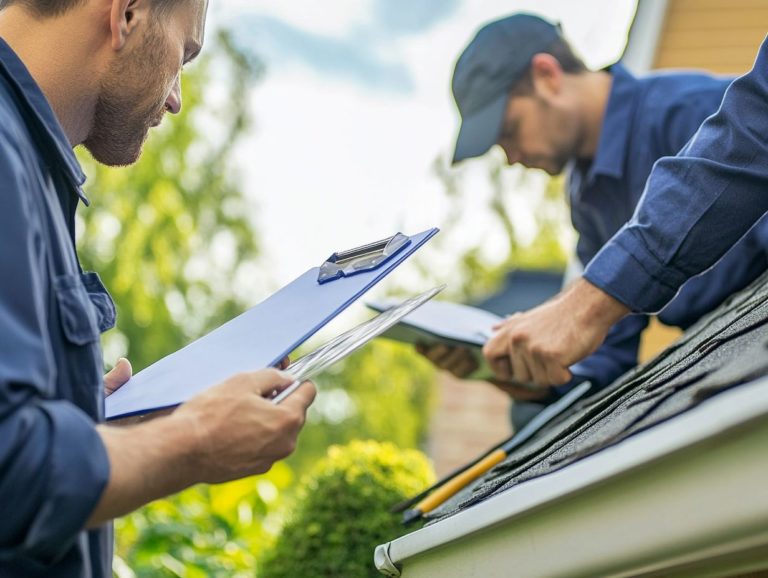How to Test a Used Car’s Features
Buying a used car can be both exhilarating and overwhelming. With many options at your fingertips, understanding how to evaluate a vehicle s features is vital for making a smart investment.
From examining exterior conditions to assessing interior comforts and how well the parts work together, every detail significantly influences your purchasing decision.
Get ready! This guide shows you the key features to check in a used car, empowering you to evaluate safety and performance with confidence while negotiating like a pro.
Prepare to drive away with absolute peace of mind!
Contents
- Key Takeaways:
- Why Test a Used Car’s Features?
- Exterior Features to Test
- Interior Features to Test
- Mechanical Features to Test
- Safety Features to Test
- Final Considerations
- Frequently Asked Questions
- Want to know how to test a used car’s features effectively?
- What are some important exterior features to test on a used car?
- How can I check the interior features of a used car?
- What are some things to look for during a test drive of a used car?
- Should I bring along a mechanic to test a used car’s features?
- What should I do if I find any issues with the features of a used car?
Key Takeaways:
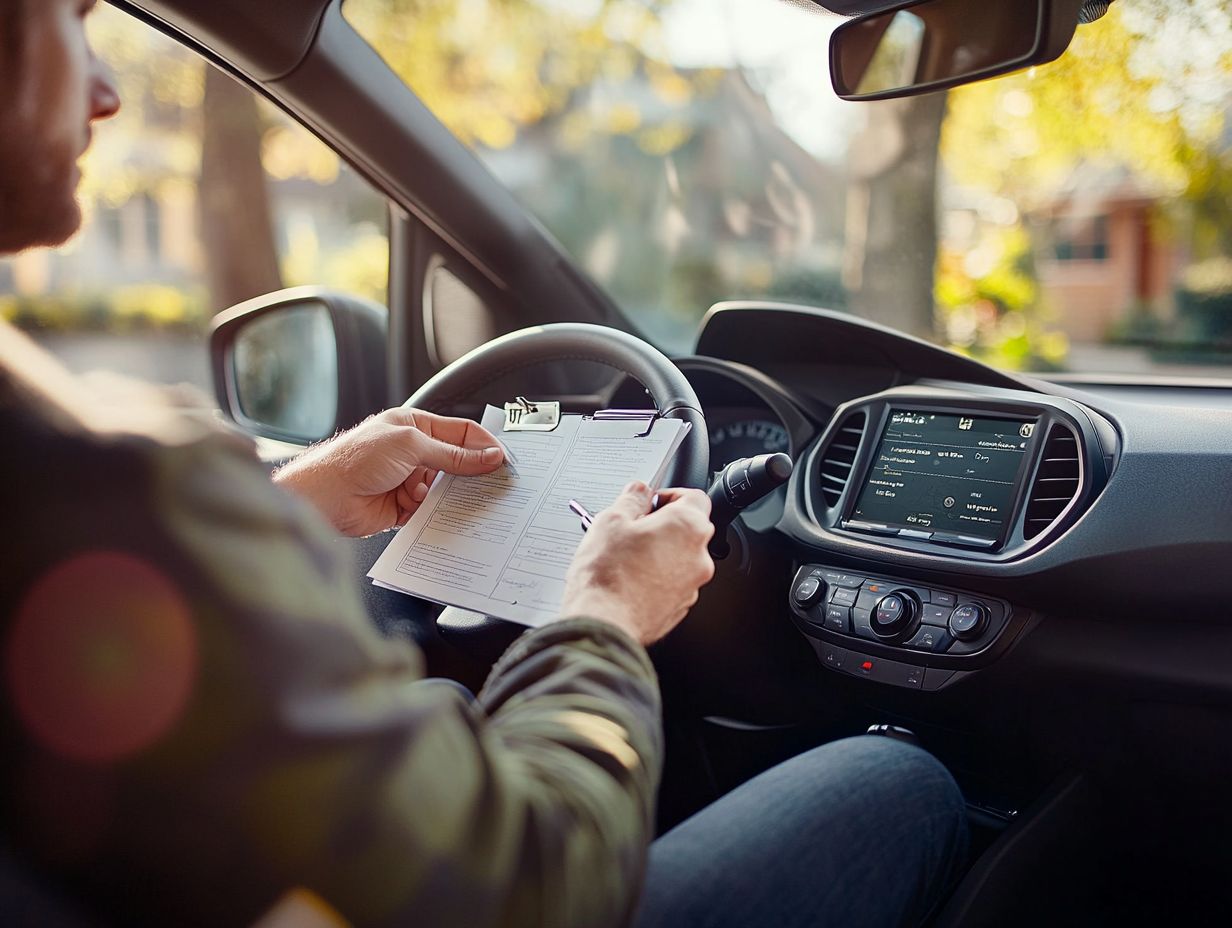
- Thoroughly testing a used car’s features before purchase can save you from potential safety hazards and costly repairs down the road.
- Exterior, interior, mechanical, and safety features all play a role in assessing a used car’s overall condition and value.
- Before negotiating a price, consider the results of your testing and use them as leverage for a fair deal.
Why Test a Used Car’s Features?
Testing a used car’s features is essential for making a savvy investment. Understanding the importance of test driving a used car can help you avoid any financial traps.
Look into the car’s details, like its condition and accident history. These factors can significantly affect your driving experience and resale value.
Resources like vehicle history reports and consumer reports can help you assess the dealership’s reputation and the vehicle’s past, ultimately guiding you toward a well-informed purchasing decision.
Benefits of Thorough Testing
Thoroughly testing a used car offers numerous advantages that enable you to make informed decisions and avoid future mechanical headaches.
By dedicating time to a comprehensive inspection, you can uncover hidden issues that might lead to costly repairs later on. This ultimately saves you money in the long run.
A reliable inspection report serves as a detailed record of the car’s condition, providing you with peace of mind and increasing your negotiating power.
Understanding available warranty options can protect your investment, ensuring you re covered against unexpected mechanical failures. All these elements come together to create a more confident and secure ownership experience.
Exterior Features to Test
When assessing a used car, exterior features play a crucial role, serving as initial indicators of the vehicle’s overall quality and condition. A detailed exterior inspection is essential; it involves evaluating the body for any signs of rust or damage, checking the tire tread depth, and ensuring the brakes and suspension are functioning well.
This thorough assessment can unveil underlying mechanical issues that might not be immediately apparent, enabling you to make a more informed decision before finalizing your purchase.
Body Condition and Functionality
When evaluating a used car, body condition and functionality are paramount, as they greatly affect not only the vehicle s aesthetic appeal but also its overall performance and resale value.
To properly assess body condition, conduct a meticulous inspection of both the exterior and interior. Look for signs of rust, dents, or uneven paint, which might indicate prior accidents. A comprehensive vehicle history report can offer valuable insights into any past damages or repairs, enabling you to make informed decisions.
A robust body structure enhances safety and significantly boosts the vehicle s marketability. By maintaining the integrity of the car s frame and panels, you can ensure a favorable appraisal during resale, ultimately maximizing your investment.
Tires, Brakes, and Suspension
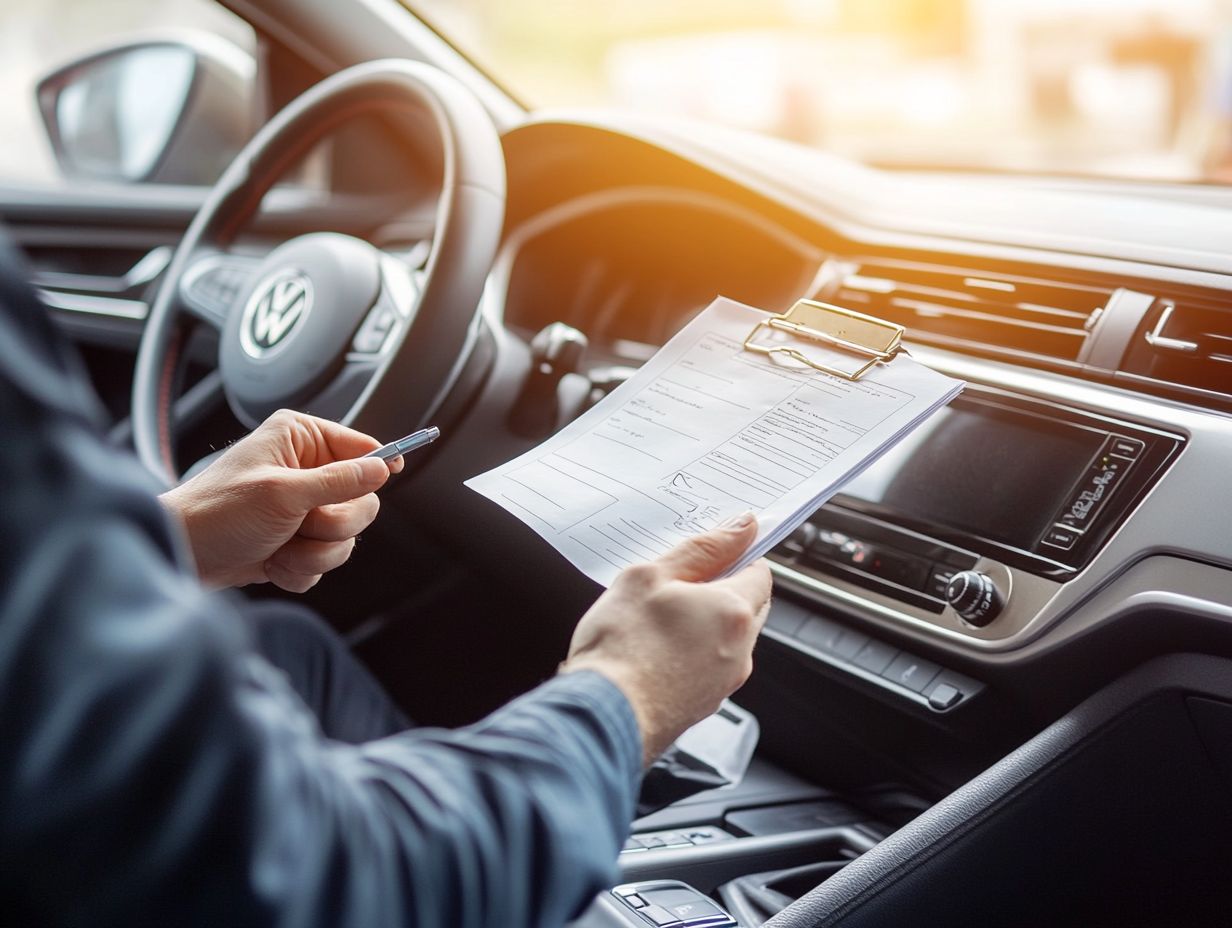
The tires, brakes, and suspension of a used car are critical components that directly influence both safety and your driving experience.
Regular inspections are imperative to ensure these elements are in optimal condition before you consider making a purchase. For instance, using an inspection checklist to evaluate tread depth on the tires is essential. Tread depth refers to how deep the grooves are in your tires. Deeper grooves provide better grip on the road.
Insufficient tread can drastically affect traction and handling in various weather conditions. Check the brake function. A working braking system is vital for safety.
Assessing the suspension quality not only impacts ride comfort but also plays a key role in vehicle stability. Check maintenance records to find any past mechanical problems. By doing this, you can make informed decisions about the vehicle’s reliability and longevity.
Interior Features to Test
Evaluating the interior features of a used car is crucial for guaranteeing a comfortable and enjoyable driving experience. After all, this is the space where you’ll be spending the majority of your time.
Comfort and Convenience Features
The comfort and convenience features in a used car significantly enhance your overall experience. They transform long drives into enjoyable adventures.
With seats designed for comfort, you ll find that even during extended journeys, relaxation is just a seat away. Climate control systems let you personalize the temperature to your liking, ensuring that both you and your passengers stay comfortable, no matter what the weather throws your way.
Ample storage options, from spacious glove compartments to versatile trunk space, cater to your needs. Whether you’re a family packing for a getaway or an individual hauling sports gear, these thoughtful design elements create a pleasant driving experience.
They allow you to focus on the journey ahead rather than discomfort or cramped spaces.
Entertainment and Technology Features
Entertainment and technology features are becoming increasingly essential in today s used cars. They often tip the scales for buyers seeking modern conveniences.
As someone who values user experience, you ll find yourself particularly attracted to advanced audio systems that deliver high-quality sound. These systems transform your journeys into a symphony of enjoyment.
Easy-to-use navigation systems not only help you plan your routes but also enhance safety by reducing distractions. With connectivity options like Bluetooth and smartphone integration, you can effortlessly access your music and stay in touch.
Your car becomes a versatile hub for both entertainment and communication. These features elevate your driving experience and significantly influence your purchasing decisions.
Prioritize vehicles that keep you connected and entertained on the go.
Mechanical Features to Test
Testing the mechanical features of a used car is essential for uncovering potential issues that could lead to considerable repair costs in the future. Understanding the importance of a used car test drive and taking the time to thoroughly assess these components can save you money and the headache of unexpected repairs later on.
Engine Performance and Maintenance
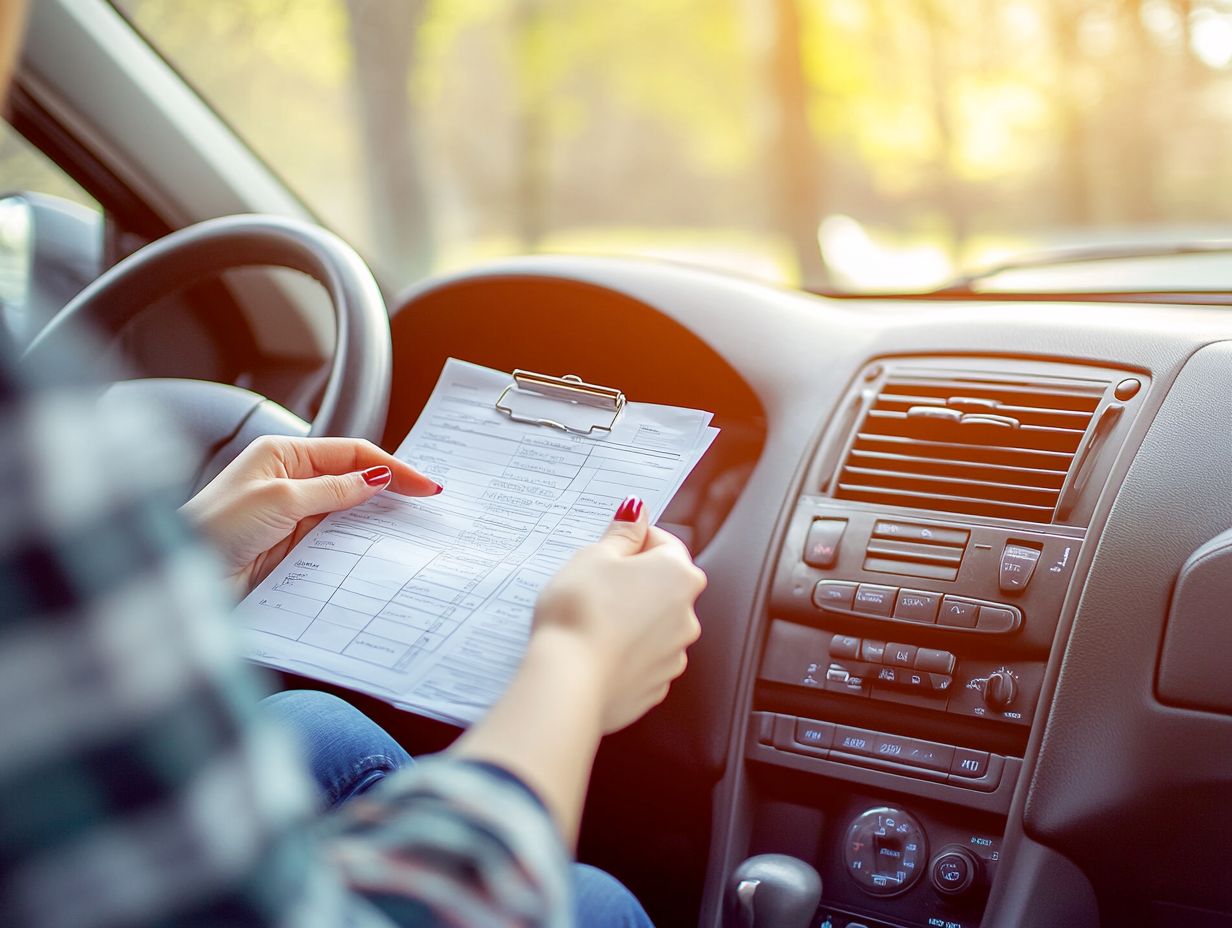
When considering a used car, the engine’s performance is often the most critical aspect to evaluate. It directly influences the vehicle’s reliability and longevity.
To truly gauge this performance, explore several methods that provide a clearer picture of the engine s health. A thorough mechanical inspection is paramount; it allows you to identify underlying issues like oil leaks, unusual noises, or irregular vibrations that could signal trouble down the road.
Reviewing the vehicle’s maintenance records is equally important. This documentation reveals how well the engine has been cared for over the years. It often highlights essential services performed, such as oil changes and tune-ups, which are vital for keeping the engine running smoothly.
By combining these assessments, you ll gain a comprehensive understanding of what to expect from the engine’s performance as you move forward.
Transmission and Drivetrain
The transmission and drivetrain are important parts of any used car, significantly influencing your overall driving experience.
To ensure these systems are functioning at their best, a thorough inspection is essential for you as a potential buyer. One critical step is to review the vehicle s service history. This documentation can unveil any past mechanical issues that might not be immediately apparent. It often details previous repairs and routine maintenance.
By carefully examining this information, you help yourself make an informed decision, steering clear of future complications that may arise from overlooked mechanical failures in these critical systems.
Safety Features to Test
When testing a used car, prioritizing safety features is of utmost importance. To ensure you’re making a wise choice, consider reviewing what to check before buying a used car, as these elements directly influence the vehicle’s reliability and the safety of all its occupants.
Assessing Safety Ratings and Features
When evaluating a used car, it’s essential for you to assess safety ratings from reputable sources like the IIHS-HLDI (Insurance Institute for Highway Safety – Highway Loss Data Institute) and the National Highway Traffic Safety Administration. These organizations evaluate car safety for your protection.
These ratings go beyond just crash-test results; they also consider crucial features designed to protect occupants, such as airbags and braking systems that prevent the wheels from locking up during hard braking. By understanding these ratings, you can gauge the accident history and reliability of various models, which is vital for making informed purchasing decisions.
Giving thorough consideration to safety ratings can significantly impact your overall safety and ensure your peace of mind on the road.
Final Considerations
As you get closer to buying your used car, it’s time to sharpen your negotiation skills! Applying effective negotiation strategies will enable you to secure the most favorable deal possible.
Tips for Negotiating Based on Test Results
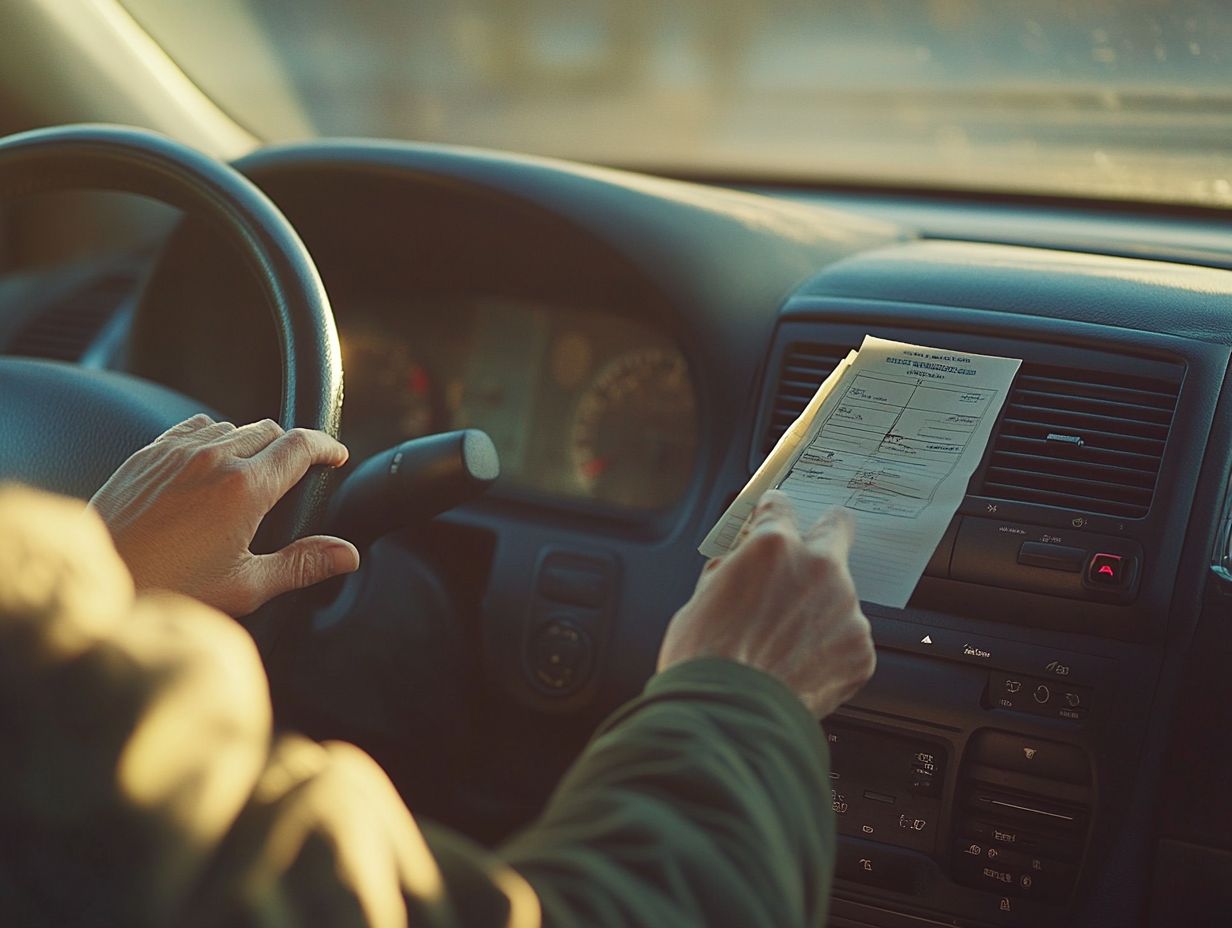
Negotiating the price of a used car based on your test results can dramatically shape the final purchase agreement.
By effectively communicating the outcomes of your tests and insights from the inspection report, you establish a strong foundation for your discussions. Highlighting any identified repair costs not only brings potential future expenses to light but also strengthens your case for a lower offer.
Incorporating warranty options into the conversation adds an extra layer of security, enabling you to negotiate for more favorable terms. This strategy showcases your understanding of the vehicle s condition and aligns with the seller s desire to reach a mutually beneficial solution.
Frequently Asked Questions
Want to know how to test a used car’s features effectively?
To test a used car’s features, start by carefully inspecting the exterior and interior of the car. Then, during the test drive, be sure to consider what to look for in a used car test drive as you pay close attention to how the car handles and how all of its features function.
What are some important exterior features to test on a used car?
Some important exterior features to test on a used car include the headlights, turn signals, brakes, and tires. For more detailed guidance, check out what to look for when test driving a car. Make sure all these components are in good working condition and show no signs of damage or wear.
How can I check the interior features of a used car?
To check the interior features of a used car, test the air conditioning and heating system, audio and navigation system, and power windows and locks. Additionally, when considering a new car, it’s important to learn how to test the comfort of a new car by checking for any tears or stains on the seats and carpets.
What are some things to look for during a test drive of a used car?
During a test drive of a used car, pay attention to how the car accelerates, brakes, and handles turns. Test the steering wheel to ensure it doesn’t pull to one side, and listen for any unusual noises from the engine or other components.
Should I bring along a mechanic to test a used car’s features?
It is highly recommended to bring a mechanic when testing a used car’s features. A mechanic can provide a professional opinion on the car’s condition and spot any potential issues you may have missed.
Ready to find your perfect used car? Start your search today!
What should I do if I find any issues with the features of a used car?
If you find problems with a used car, talk to the seller right away. You can negotiate a lower price or ask for fixes before you buy.
Serious or safety-related issues can be red flags. If you notice these, act quickly and consider looking for another car!

